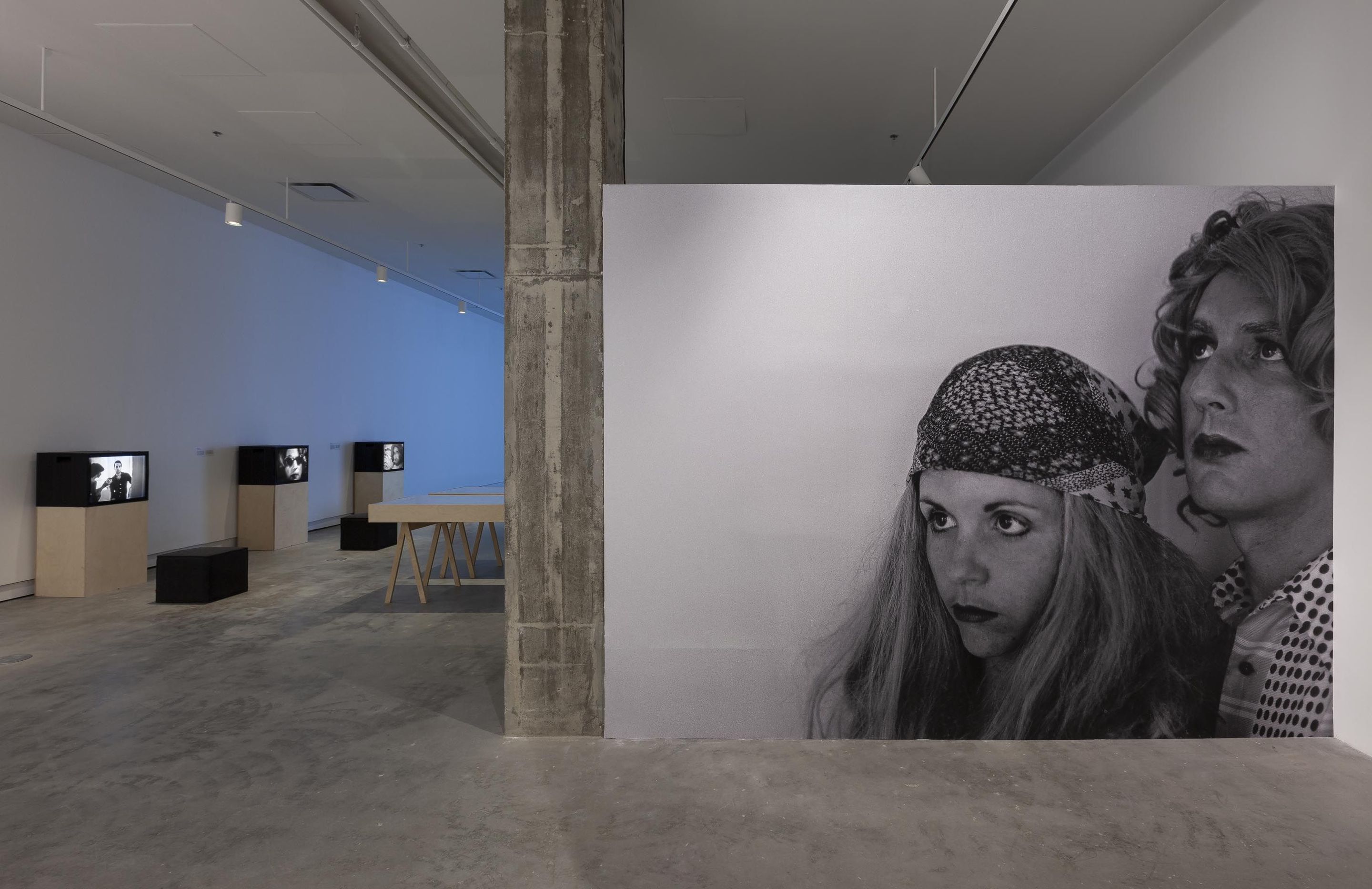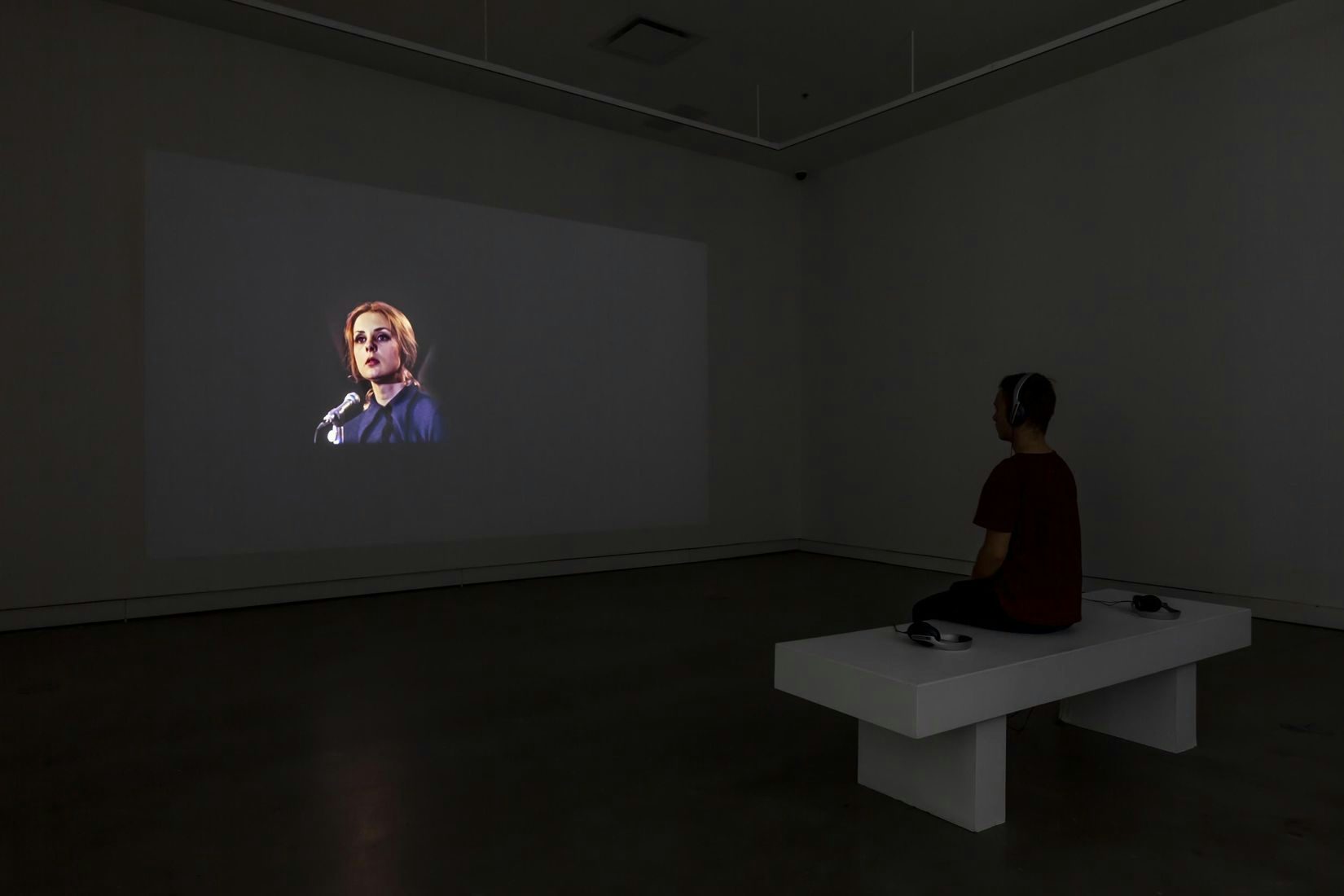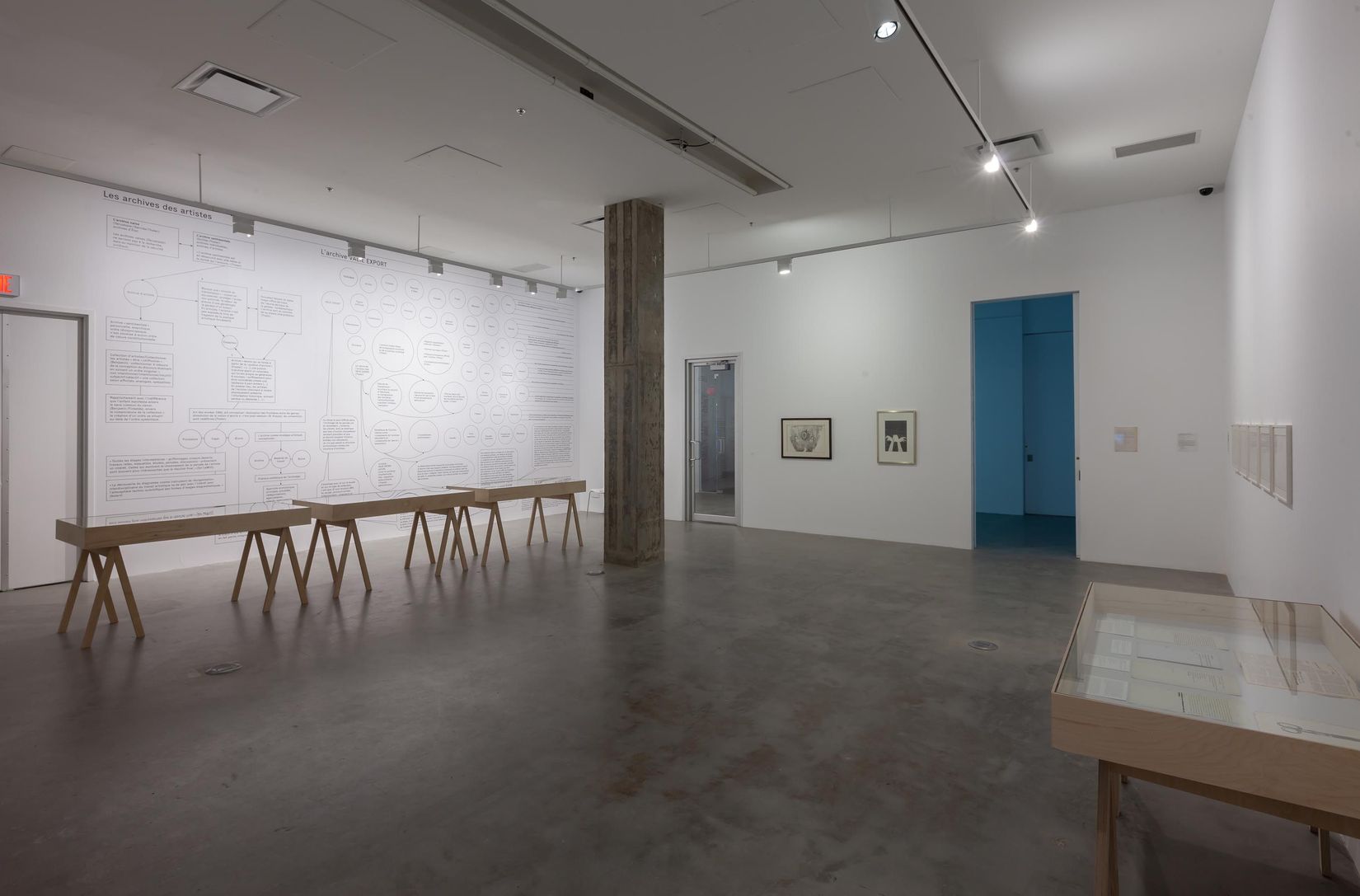
“I Almost Ran Over Liza Minnelli Today”
Colin Campbell and Lisa Steele in L.A., 1976–77
2021.02.11 - 06.26
In September 1976 video artists Colin Campbell and Lisa Steele packed a Volkswagen station wagon full of equipment and clothes and left Toronto for Southern California. The couple stayed in a small two-storey cottage in Venice Beach until their Canada Council for the Arts grant money ran out in May 1977. In this new environment they saw themselves as “anthropologists studying a very strange culture through its everyday media and manifestations.”
Living and working in close proximity, they keenly observed the outside world of sunshine and spectacle to source stories, personas, and other cultural detritus for their respective practices. Processing this material through writing and performance for video, they crafted works like the Woman from Malibu series and The Scientist Tapes, which put into circulation novel forms of love and kinship, subcultural attitudes, and queer styles. Fusing performance and narrative via video, they self-reflexively mined the schism between an “authentic” self and the artifice of a constructed persona, or, as Campbell called it, “internal” versus “external” fiction.
Ironic and intimate, Campbell and Steele’s engagement with mass media and social and psychic life extends the boundaries of identity and desire in a way that continues to resonate forty years later. This exhibition gathers together the pioneering videos that Campbell and Steele made together in Venice Beach for the first time, alongside a selection of photographs, artists’ books, texts, and ephemera.
The exhibition was first presented by the ONE Archives Foundation, Inc. at the ONE Gallery, West Hollywood.

JON DAVIES
In 1976 video artists Colin Campbell (1942–2001) and Lisa Steele (b. 1947) left Toronto, Ontario, for Southern California. During their nine-month stay in Venice Beach they produced a number of tapes that were not only consequential for video as a medium, but also for modeling subcultural styles and practices of self-invention.
In Campbell and Steele’s day-to-day routine in their combined home/studio, art production was enmeshed in their ardent romantic relationship. They saw themselves as “anthropologists studying a very strange culture through its everyday media and manifestations.”1 Narratives, characters, images, and remarks from the cultural, social, and political landscape of Southern California entered the scene through observation: the artists’ first-hand experiences and their consumption of mass media (newspapers, television, and radio) melding into a veritable stew of anthropological information. These inputs were processed through the artists’ individual writing and performance practices for the video camera, all of which took place within their shared home/studio. While the resulting videotapes were shown in galleries and other venues, the artists also put into circulation a range of kinship practices, subcultural attitudes, and queer styles. By absorbing and processing content from their strange surroundings, and re-working and releasing it through the feedback loop afforded by video technology, Campbell and Steele articulated a lifestyle—or better, a mode of being—that accounts for the ways that desire, power, artifice, and fantasy shape communities of artists—and artworks.
Campbell and Steele got together in Toronto in 1975. By the following year, they were feeling sick of the city and decided to see what Southern California was like. Campbell had received his MFA from Claremont Graduate School near Los Angeles in 1969, while Steele—who was from the Midwest—had never visited California before. Campbell still had friends there, and they could visit Steele’s family in Kansas City, Missouri, on the long drive west. In September 1976 they packed a small Volkswagen station wagon with their video equipment and some clothes, and hit the road. They came with Canada Council for the Arts grants that provided funds for artists to live on while making new work. They would stay until the money ran out in May 1977.2
Campbell and Steele moved into a small two-storey house on 576 Rialto Avenue in Venice Beach with a bright front bedroom they used as a studio; they slept in the back bedroom. Alongside their video equipment, they had a typewriter to write their scripts and Letraset for the credit sequences, but almost no furniture. They were friendly with their neighbours—artists living cheaply in their studios—but maintained a certain distance. They drove out to the desert many times to shoot video and take photos. They also did distinctly “L.A.” things like attending the premiere of A Star Is Born featuring Barbra Streisand and Kris Kristofferson. Campbell even attracted a stalker.
They were “always working”3 and lived very frugally: they only ate out once a week, and rationed their wine. Visiting the Salvation Army to buy costumes for their videos was considered a treat, and the only real luxury was happy hour at a Marina del Rey bar to celebrate finishing a tape. Their life revolved around artmaking and each other: “Our narcissism and self-involvement were so extreme.”4 They were constantly recording and taking pictures, closely examining each other’s bodies. In their videos, the artists performed almost all the required roles themselves.
Campbell and Steele also keenly observed the world outside to source stories and personas (with their specific mannerisms and character tics, gestures, and turns of phrase), as well as other cultural detritus, as material for their work. Some arrived via their Los Angeles Times subscription, while others—like the pony skeletons that the Woman from Malibu searches for at the end of Campbell’s Hollywood and Vine (1977)—were glimpsed at upscale rooftop art parties. The couple arrived during the lead-up to the 1976 election, so the primaries were on TV alongside the satirical daily soap opera Mary Hartman, Mary Hartman, and Steele researched seismology and other idiosyncratic topics at a nearby library. After a neighbour was accidentally fumigated to death by exterminators, the ghastly story became another ingredient of Hollywood and Vine.
Their California sojourn was “an incredibly prolific and productive time.”5 Campbell created the six-part The Woman from Malibu series (1976–77)6 while Steele made the second half of her Waiting for Lancelot series (1976) as well as The Scientist Tapes (1976–77) and The Ballad of Dan Peoples (1976), where she channels the voice and manner of her grandfather, who had died soon after they visited him. Despite being in close proximity 24 hours a day, they would each conceive of their videos and write their scripts individually, not collaboratively, and then assist the other with production, following directions in order to execute their partner’s vision. Almost everything was written, shot, and edited in their home/studio, so the other was always nearby—no further than an adjoining room—even when they did not appear on camera. What was collaborative was their completely shared discourse and set of references. While they did not see their respective tapes as similar, they were consciously “investigating the same context through different lenses […]. Inflected and influenced by the same social and political and cultural experiences, sharing those together always.”7 Essentially they breathed the same air, but each absorbed the oxygen in a unique way. Their anthropological research was a form of detached engagement with the outside world, while the processing of this data through writing, performing, shooting, and post-producing the videos took place in their home/studio hotbed. The work’s potency lies in this mantling of public and private.
By contrast, Campbell and Steele’s works prior to coming to Southern California were both starkly hermetic, even navel-gazing. Campbell’s videos like Secrets (1974) and Hindsight (1975) had none of the humour of his first tapes from the early 1970s; instead he recited letters or diaristic ruminations over slow shots of himself framed in mirrors or windows. Steele scrutinized her body and psyche: Facing South and the aptly titled Internal Pornography (both 1975) deftly restored self-reflective interiority to images of women’s bodies against an objectifying dominant culture.
The foreign context of Southern California allowed the artists to get out of their own heads. It arguably transformed their view of identity from a private, inner self to one constructed as a perverse cultural bricolage. Additionally, curator Philip Monk claims that, as “hippie counterculture” values soured into “post-punk new wave” negation by the late 1970s, video art required irony to “wake it up”: “It needed to distance itself from itself by adopting new forms and new contents, by seeking new formats and new subjects.”8 Irony certainly altered both Campbell’s and Steele’s practices quite drastically, in complex ways. Any performance of the self from then on would have to be placed in quotation marks, a kind of existential drag. This is the shift Campbell described as “dealing with external fiction as opposed to internal fiction.”9 Most of their Southern California works therefore act as meta-narratives: their personas reveal themselves through the idiosyncratic textures of how they tell a particular story. Speaking frontally to the camera, they seem to confide directly to us. The simple production setup of a video camera facing a performer turns the technological limitations of early video to their most expressive ends—and it does so by foregrounding the powers and pitfalls of spoken language.10
Campbell and Steele also wielded irony and ambiguity to look askance at binaries of sexuality and gender identity. Campbell and Steele’s radically open relationship was queer avant la lettre, and not only because Campbell was bisexual and his everyday gender performance highly androgynous.11 When Campbell crafted the persona of the Woman from Malibu for his landmark series, he saw her as a particular individual, not simply as a manifestation of generic womanhood to be imitated via drag according to clichés of femininity and glamour.12 Hollywood and Vine reveals the process of the Woman from Malibu’s construction as Campbell transitions from an effeminate male figure to his neurotic alter ego over the tape’s first seven minutes. What is most striking is that he channels her specific voice, gestures, and facial expressions perfectly and consistently throughout the act of costuming. The narration establishes a stable identity through the coherence of voice and storytelling while the picture destabilizes it in turn, introducing a schism between spoken performance and corporeal self-presentation. While the video medium tethers sound and image onto a single magnetic tape, Campbell wrenches them apart to queer ends here. Campbell and Steele brilliantly used performance and narrative to self-reflexively mine this schism—or irony—between an “authentic” self and the artifice of a constructed persona, internal and external fiction. Steele’s The Scientist Tapes vampirizes various scientific and medical debates covered by the media like genetic engineering, new communicable diseases, and the NASA Space Shuttle program. Rather than focusing on the modern laboratory, however, she presents Campbell and herself as vacuous vessels for the technical vocabulary that defines the modern age.13 These haughty specialists primp and preen as if starring in a magazine ad; their clean and empty poses seem to positively revel in rationality. The lovelorn scientists speak as if in a dissociative or fugue state, like they are watching themselves from the outside—or on television. Their carefully coiffed insularity satirizes modern-day heterosexuality, suggesting a queer perspective on the artists’ own intimate relationship, which to an outsider might appear traditional. In crafting personas for themselves rather than merely taking on characters, Campbell and Steele also allowed their creations to take on lives of their own outside the original tapes, becoming members of the art scene themselves. For example, Campbell would later speak publicly of the Woman from Malibu as if she were a real person, and he resurrected and remixed footage of her and other personas like “Art Star” and “Robin” in tapes he made decades later in the years leading up to his death.14 Younger artists made their own homages in turn.15
Some of the videos that Campbell and Steele made in Venice Beach were shown at galleries and museums in and around L.A., including David Ross’s esteemed video program at the Long Beach Museum of Art, where, as in Toronto, a dynamic young art scene was inventing itself. Experimenting with new kinds of relationships and kinship structures, artists built subcultures as much from fantasy as from reality. In Southern California, Campbell and Steele’s queer video practices prefigured the establishment of West Hollywood’s EZTV in 1979, where they would have found not only kinship but also the narrative videos of founder John Dorr, which similarly mined Hollywood spectacle.16 Their interest in the mass media and use of language and gesture to create personas also has parallels with the irony-laden tapes Cynthia Maughan made throughout the seventies alone in her studio in Pasadena.[^17 The queer styles and practices Campbell and Steele developed in 1976–77, in the shadow of Hollywood, ultimately offered new models of self and of community to the DIY, artist-run culture they returned to in Toronto. Ultimately, their work fabulates and performs queer ideas of identity, desire, and kinship that were formative to the subcultural scenes that adhered around video in the 1970s—inspired by the utopian promise it once held—in Toronto, in L.A., in Montreal, and beyond.
VOX is grateful to the author, Jon Davies, as well as the ONE Archives Foundation for granting permission to reprint this essay originally published in conjunction with the exhibition “I Almost Ran Over Liza Minnelli Today”: Colin Campbell and Lisa Steele in L.A., 1976-77 presented at ONE Gallery, West Hollywood, California from July 8 to September 23, 2018.


